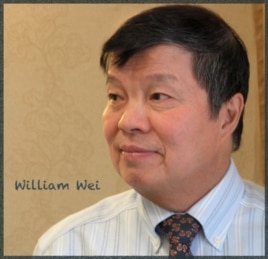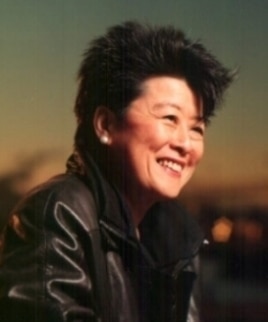Qoros, a new automaker from China, is aiming to be the first Chinese car brand accepted on an international level. And it plans to do so by rethinking the traditional auto-marketing standard -- speed and open roads -- and creating a practical, more "social" vehicle suited to urban life.
Unlike other Chinese car companies, typically known for substandard, unsafe vehicles, Qoros is a venture between Israel's richest man and state-owned Chinese automaker Chery Automobile. It employs European executives and designers who are veterans of companies like Volkswagen and BMW.
"We are a Chinese company in the sense that we are born in China, one of our parents is Chinese," said Stefano Villanti, Qoros' head of sales, marketing and product strategy, speaking from his office overlooking Shanghai's Oriental Pearl Tower. "On the other hand, we make international-level product."
He said when Qoros launched in 2007, its execs considered that many cars are rooted in decades-old ideas of speed and the open road -- far from the reality of constant gridlock in so many cities. Qoros wanted to make a car better suited for modern urban life.
"We thought there was an opportunity to create something different, where the balance is tilted more to comfort, sophistication, digital connectivity -- what we call a social car," Mr. Villanti said.
A digital ecosystem allows the car to connect with the owner's mobile devices via an app and features a touchscreen "infotainment" system. And its sedan model features shoe storage on the passenger side for on-the-go footwear changes and additional space to stow water bottles.
One of Qoros' biggest challenges is overcoming deeply-rooted stigmas against Made in China." Mr. Villanti notes that consumers in China, Qoros' primary market and the world's largest car market, are the most distrustful of Chinese auto brands.
"Someone has to be a game-changer, and maybe Qoros has the opportunity once and for all to change the perception of quality for "Made in China,'" said Arto Hampartsoumian, CEO of BBH China, Qoros' creative agency of record. "Something so visible as a car, if it does live up to the expectation ... then they will be able to change perceptions on a bigger scale."
...
Qoros' shops include the Shanghai offices of Mindshare (media) and Agenda (digital). The focus is on telling opinion leaders and consumers who it is and why it exists, Mr. Villanti said.
The company's tagline is "A New Drive." Outdoor ads for the Shanghai auto show, which kicked off this past weekend, show Qoros sedans on an assembly line. It poses the question: "Does the brand create quality, or does quality create the brand?"
The 3 sedan, priced from about $21,000 to $29,000, is scheduled to go on sale in China and Eastern Europe at the end of 2013. A hatchback model set for release in early 2014 will help pave entry into Western European markets.
Qoros' biggest problem may not be the product, but the market into which it's launching, with car sales flat in China and on the decline in Europe. "The concept is good. The timing, however, is unfortunate," said Bertel Schmitt, editor-in-chief of automotive website The Truth About Cars. So does the world really need another car company? "No," Mr. Vallanti said. " Just a different one."
Read at Adage.com.
"We are a Chinese company in the sense that we are born in China, one of our parents is Chinese," said Stefano Villanti, Qoros' head of sales, marketing and product strategy, speaking from his office overlooking Shanghai's Oriental Pearl Tower. "On the other hand, we make international-level product."
He said when Qoros launched in 2007, its execs considered that many cars are rooted in decades-old ideas of speed and the open road -- far from the reality of constant gridlock in so many cities. Qoros wanted to make a car better suited for modern urban life.
"We thought there was an opportunity to create something different, where the balance is tilted more to comfort, sophistication, digital connectivity -- what we call a social car," Mr. Villanti said.
A digital ecosystem allows the car to connect with the owner's mobile devices via an app and features a touchscreen "infotainment" system. And its sedan model features shoe storage on the passenger side for on-the-go footwear changes and additional space to stow water bottles.
One of Qoros' biggest challenges is overcoming deeply-rooted stigmas against Made in China." Mr. Villanti notes that consumers in China, Qoros' primary market and the world's largest car market, are the most distrustful of Chinese auto brands.
"Someone has to be a game-changer, and maybe Qoros has the opportunity once and for all to change the perception of quality for "Made in China,'" said Arto Hampartsoumian, CEO of BBH China, Qoros' creative agency of record. "Something so visible as a car, if it does live up to the expectation ... then they will be able to change perceptions on a bigger scale."
...
Qoros' shops include the Shanghai offices of Mindshare (media) and Agenda (digital). The focus is on telling opinion leaders and consumers who it is and why it exists, Mr. Villanti said.
The company's tagline is "A New Drive." Outdoor ads for the Shanghai auto show, which kicked off this past weekend, show Qoros sedans on an assembly line. It poses the question: "Does the brand create quality, or does quality create the brand?"
The 3 sedan, priced from about $21,000 to $29,000, is scheduled to go on sale in China and Eastern Europe at the end of 2013. A hatchback model set for release in early 2014 will help pave entry into Western European markets.
Qoros' biggest problem may not be the product, but the market into which it's launching, with car sales flat in China and on the decline in Europe. "The concept is good. The timing, however, is unfortunate," said Bertel Schmitt, editor-in-chief of automotive website The Truth About Cars. So does the world really need another car company? "No," Mr. Vallanti said. " Just a different one."
Read at Adage.com.










